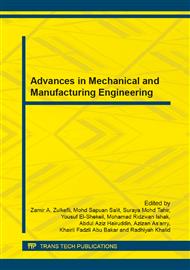p.210
p.216
p.222
p.228
p.234
p.240
p.245
p.250
p.256
Experimental and Simulation Study on the Effects of Twisted Coil Plates on the Performance of Fire Tube Boiler
Abstract:
Influences of twisted coil plate insert on the performance of fire tube boiler using were experimentally investigated. In this study, the twisted coil plate was placed inside the tube to illustrate boiler performance. The performances of boiler were studied in terms of operating time taken, exhaust flue gas temperature, steam temperature and boiler efficiency. The boiler was operated with 50%, 100% and without tube coil plate inserts at low and high fire burner setting. Based on the results obtained, effect of twisted plate insert and without insert were observed. There is an enhancement in boiler performance in terms of boiler efficiency. The ANSYS Fluent simulation showed the effect of width ratio and twist ratio. Therefore, the experimental results indicate that using twisted coil plate in the boiler is one of the best ways to improve boiler performance.
Info:
Periodical:
Pages:
234-239
Citation:
Online since:
June 2014
Authors:
Price:
Сopyright:
© 2014 Trans Tech Publications Ltd. All Rights Reserved
Share:
Citation:


